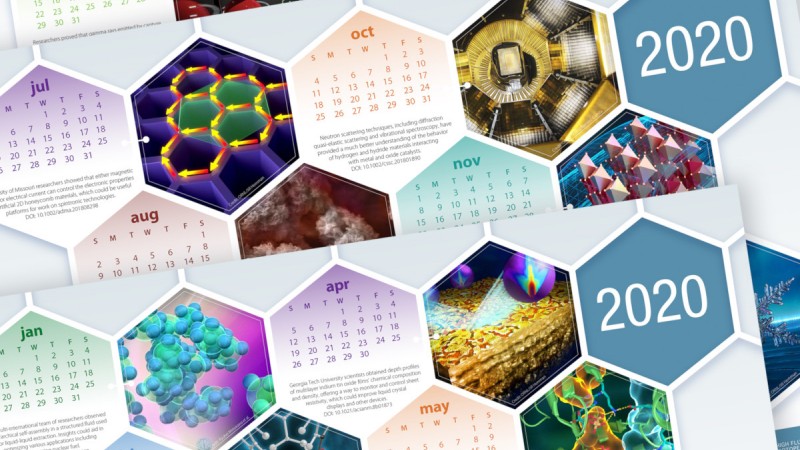For more information on the scientific research and publications featured each month, visit these links:
January: A multi-international team of researchers observed hierarchical self-assembly in a structured fluid used for liquid-liquid extraction. Insights could aid in optimizing various applications including reprocessing nuclear fuel.
DOI: 10.1021/acscentsci.8b00669
February: Stanford and UC Berkeley scientists discovered the site providing a zirconium-based metal-organic framework with its powerful catalytic abilities, providing a better understanding of how it functions at the molecular level.
DOI: 10.1038/s41557-018-0171-z
March: Researchers proved that gamma rays emitted by capture of polarized neutrons on protons show an asymmetry that is evidence of parity violation—a major step towards an experimental determination of important aspects of the weak nuclear force.
DOI: 10.1103/PhysRevLett.121.242002
April: Georgia Tech University scientists obtained depth profiles of multilayer indium tin oxide films’ chemical composition and density, offering a way to monitor and control sheet resistivity, which could improve liquid crystal displays and other devices.
DOI: 10.1021/acsanm.8b01873
May: Researchers used neutrons at ILL and ORNL’s HFIR to observe proton activity during phosphoryl group transfer catalyzed by a protein kinase A enzyme. Understanding this mechanism could lead to better treatments for cancer, diabetes, and cystic fibrosis.
DOI: 10.1126/sciadv.aav0482
June: Scientists demonstrated spin waves in a CrI3 honeycomb ferromagnet can have robust topological properties, potentially useful for new spintronics—energy-efficient devices based on the electron spin.
DOI: 10.1103/PhysRevX.8.041028
July: University of Missouri researchers showed that either magnetic fields or electrical current can control the electronic properties of artificial 2D honeycomb materials, which could be useful platforms for work on spintronic technologies.
DOI: 10.1002/adma.201808298
August: Scientists from the University of Oklahoma studied how light-activated antibacterial nanoparticles added to dental resins prevent cavities from occurring around fillings. The nanoparticles can also promote bonding of the resin to natural tooth material.
https://bit.ly/2MSTTwZ
September: Researchers found fractionalized magnetic excitations in a 3D material that match theoretical models for a quantum spin liquid. These materials may be valuable in advancing quantum technologies.
DOI: 10.1038/s41567-018-0317-3
October: Neutron scattering techniques, including diffraction quasi-elastic scattering and vibrational spectroscopy, have provided a much better understanding of the behavior of hydrogen and hydride materials interacting with metal and oxide catalysts.
DOI: 10.1002/cssc.201801890
November: Neutron diffraction showed that metal cations that form strong ionic bonds with oxygen effectively enable the reversible oxygen redox reaction. This paves the way to next-generation oxide cathodes with higher capacities and lower costs.
DOI: 10.1039/C8TA09422E
December: ORNL researchers discovered a pathway to the unexpected formation of dense, crystalline phases of ice thought to exist beyond Earth’s limits, which challenges accepted theories about super-cooled water and amorphous, or non-crystalline, ice.
DOI: 10.1038/s41586-019-1204-5





